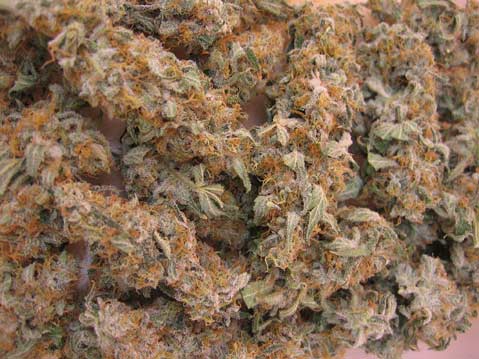Tax and Regulate
Not Tax and Become Hysterical

Someone needs to tell a few of the city council members that the approach to medicinal marijuana that the people of Santa Barbara and the state of California voted overwhelmingly for in 1996 is tax and regulate, not tax and get hysterical.
An article in the Santa Barbara County Medical Society News by current County Medical Society President Philip R. Delio, M.D., stated, “One would have hoped that as city council members gathered to discuss the methods of distributing medical marijuana in Santa Barbara, they would have asked doctors, pharmacists, or health care professionals for input and guidance. Instead, the topic is being sorted out via public forums that are dominated by emotion, personal opinion, anecdotal testimony, and the like.” I couldn’t agree more with Dr. Delio.
The latest excursion into the silly and inane is that somehow having a pharmacy, in this case a pharmacy that deals in one medicine, cannabis, near a drug rehab center, has an adverse affect on recovering substance abusers. Clearly this allegation is a bit unique. If memory serves me correctly, Caldwell’s has a pharmacy across the street from Cottage Hospital, and Cottage has a pharmacy in the building. Both of these pharmacies carry, among other drugs, THC (Marinol), with no apparent adverse affects on their recovering patients who have substance abuse problems.
If one looks at the epidemiology of opiate abuse (in my career I have treated over 800 opiate abusers), one finds that the most common antecedent drug to heroin is alcohol, and alcohol is also the most commonly used drug subsequent to stopping use of heroin. Yet there has been no hue and cry to deny alcohol at the Encina Restaurant right down the block from Cottage. In fact, as a matter of public health policy, I think I would like to see fewer outlets for alcohol and tobacco. True, their availability is so ubiquitous that the result would likely be more cosmetic than substantive, and when I had my successful quadruple bypass surgery at Cottage (thank you very much) my wife waited out the surgery time over a beer at Derf’s. But it would still be a nice gesture.
If we weigh this medicinal cannabis dispensary concern against concern over the school near to one of these outlets—a school that the City didn’t know was a school; a school for the handicapped which, according to testimony of former city attorney Steve Amerikaner and former city councilman and architect Gil Garcia, did not meet state school earthquake standards and did not have handicapped access—you have to ask yourself if opponents to medicinal cannabis are manufacturing concerns out of their own ill-informed zealousness.
I’m familiar with the historical literature on the matter of cannabinoids and do not recall finding any problems (big or small) with pharmacies dispensing medicinal cannabis from 1854-1941. The literature does not mention robberies or abuse by pharmacy personnel. The AMA testified in 1937 that they knew of no dangers from medicinal cannabis.
On the other hand, Harry Anslinger, first director of the Federal Bureau of Narcotics and Dangerous Drugs, gave outrageous and it turns out mostly inaccurate testimony at the 1937 Marijuana Tax Act hearings. According to the AMA, Anslinger had no facts, just allegations. Even he did not raise this drug-abuse-treatment canard as an issue. The AMA opposed the Marijuana Tax Act in 1937 and now, in 2010, the AMA is demanding that cannabis be rescheduled to allow more research on cannabis and cannabinoids. Rescheduling would also allow all pharmacies to again dispense cannabis as they did uneventfully for over three quarters of a century.
Dr. Delio is right on point when he asks, “So what can we do to ensure that patients in need of medical marijuana have access, while at the same time limit abusers, children, and others from inappropriate use?” He suggests:
1. “As a therapeutic drug, marijuana should be subject to the same prescribing guidelines and regulations that would apply to any prescription drug. This includes close supervision of patients using medical marijuana by their treating physicians, strict regulation of the amounts and types of marijuana dispensed, and attention to how often the drug is being refilled.”
2. He also recommends that the Santa Barbara County Medical Society should offer their “services to the County as a resource for information, guidance, and direction on this challenging issue. The goal of these discussions should not be to limit access to effective therapeutics, but rather to ensure the safe and responsible distribution to those with medical need.”
If we as a society are truly concerned about drug abuse, let’s put our energy and money into more and better parenting education, making every child a wanted child, and supporting increased emphasis on early intervention. I’ve been involved in drug abuse treatment and prevention for over 40 years and my take on recovery is that, in addition to family and community support, key elements to recovery are length of time in treatment, quality of treatment, commitment, and the motivation of the patient.
Do we really want to follow the weird logic of the anti-dispensary activists and start clamoring to close Caldwell’s—and all the rest of the pharmacies, which carry all manner of highly addictive drugs that are subject to abuse?
This is a states’ rights issue, as the late Chief Justice of the Supreme Court William Rehnquist, now retired Justice Sandra Day O’Connor, and current Justice Clarence Thomas wrote in dissent in Gonzales v. Raich. What we need is a return to sanity and to the Constitution, particularly the 9th and 10th amendments. If the federal government followed the Constitution, cannabis too would be dispensed in pharmacies, as it was for nearly a century, and we wouldn’t be having this discussion.



